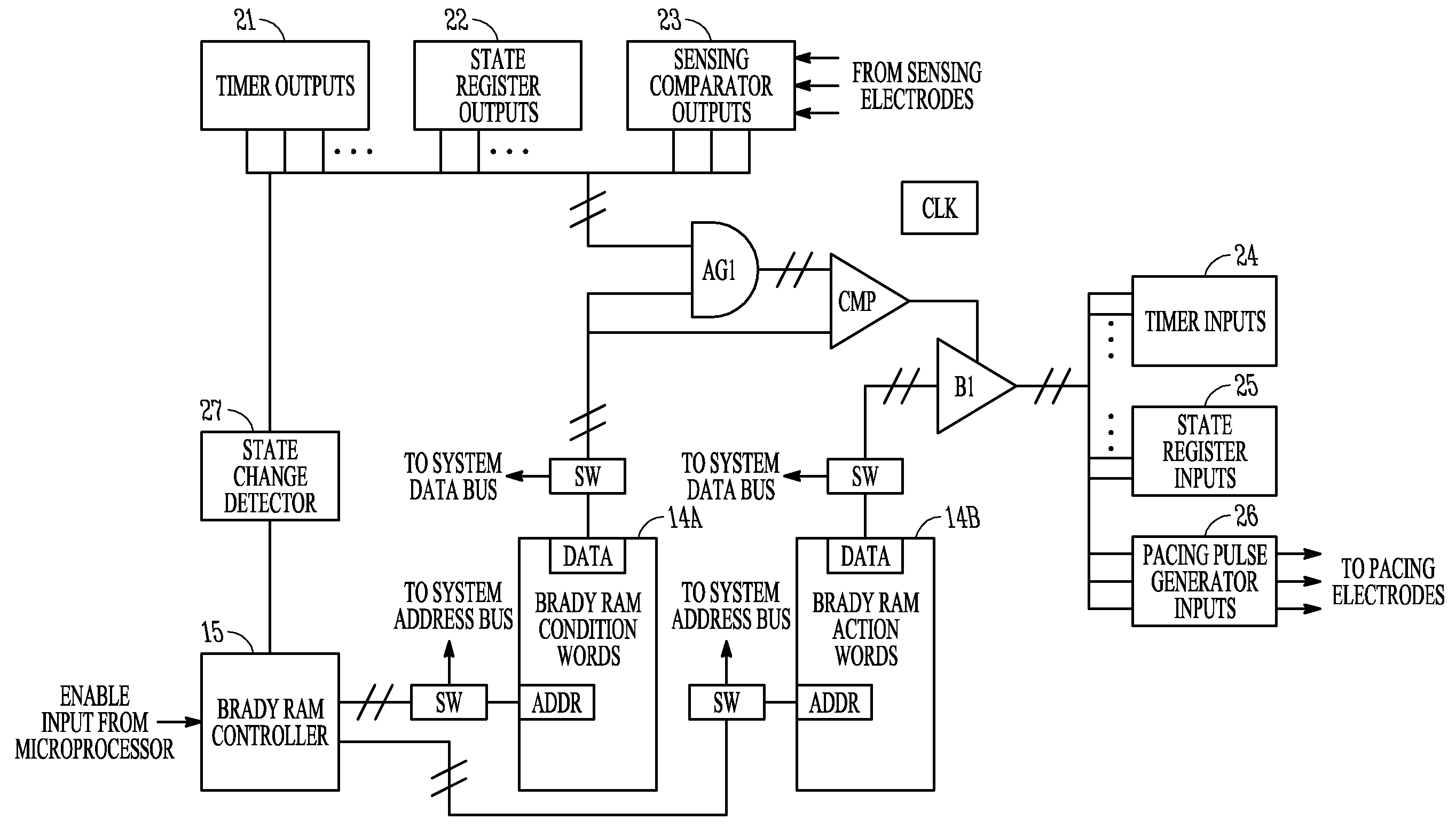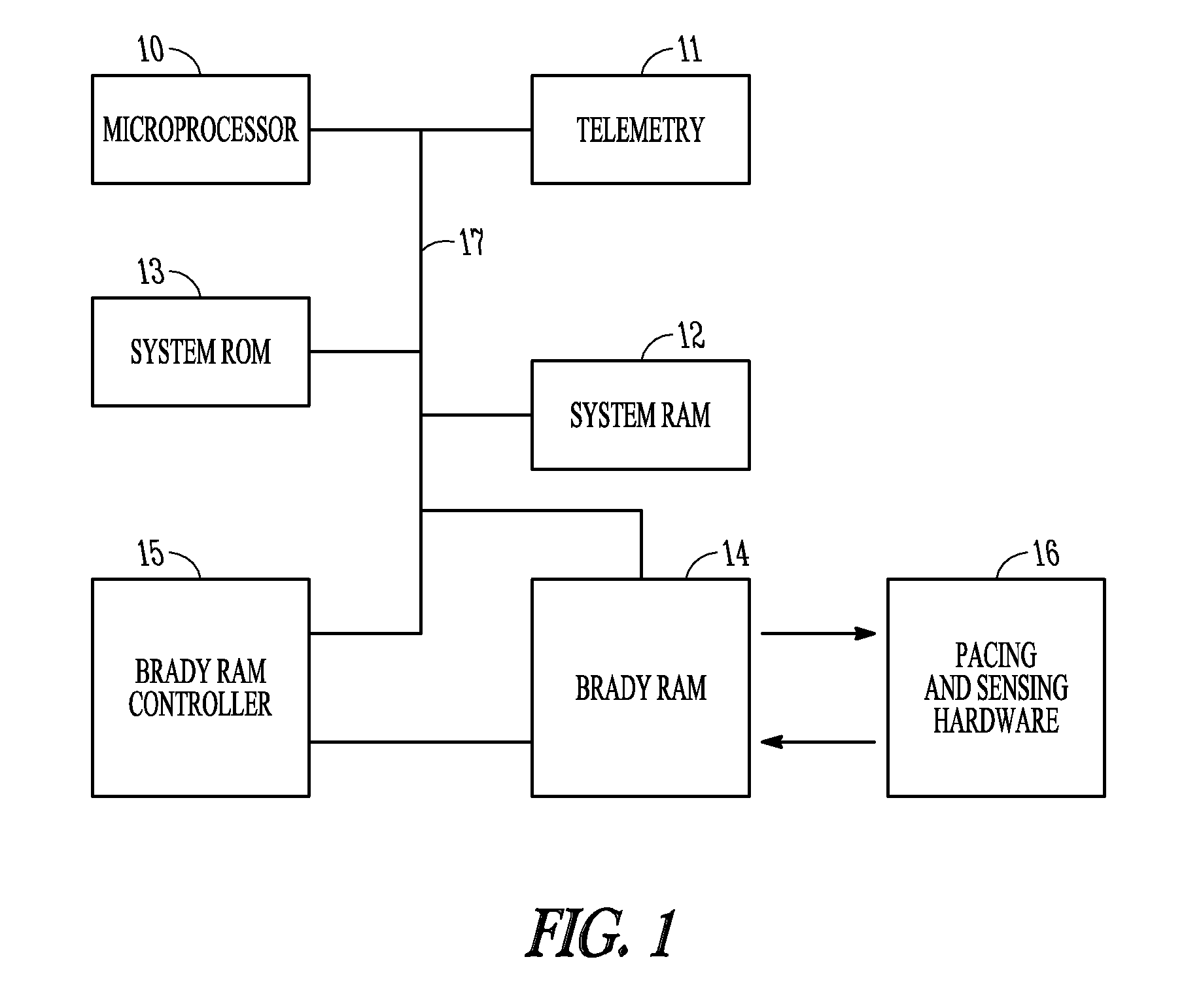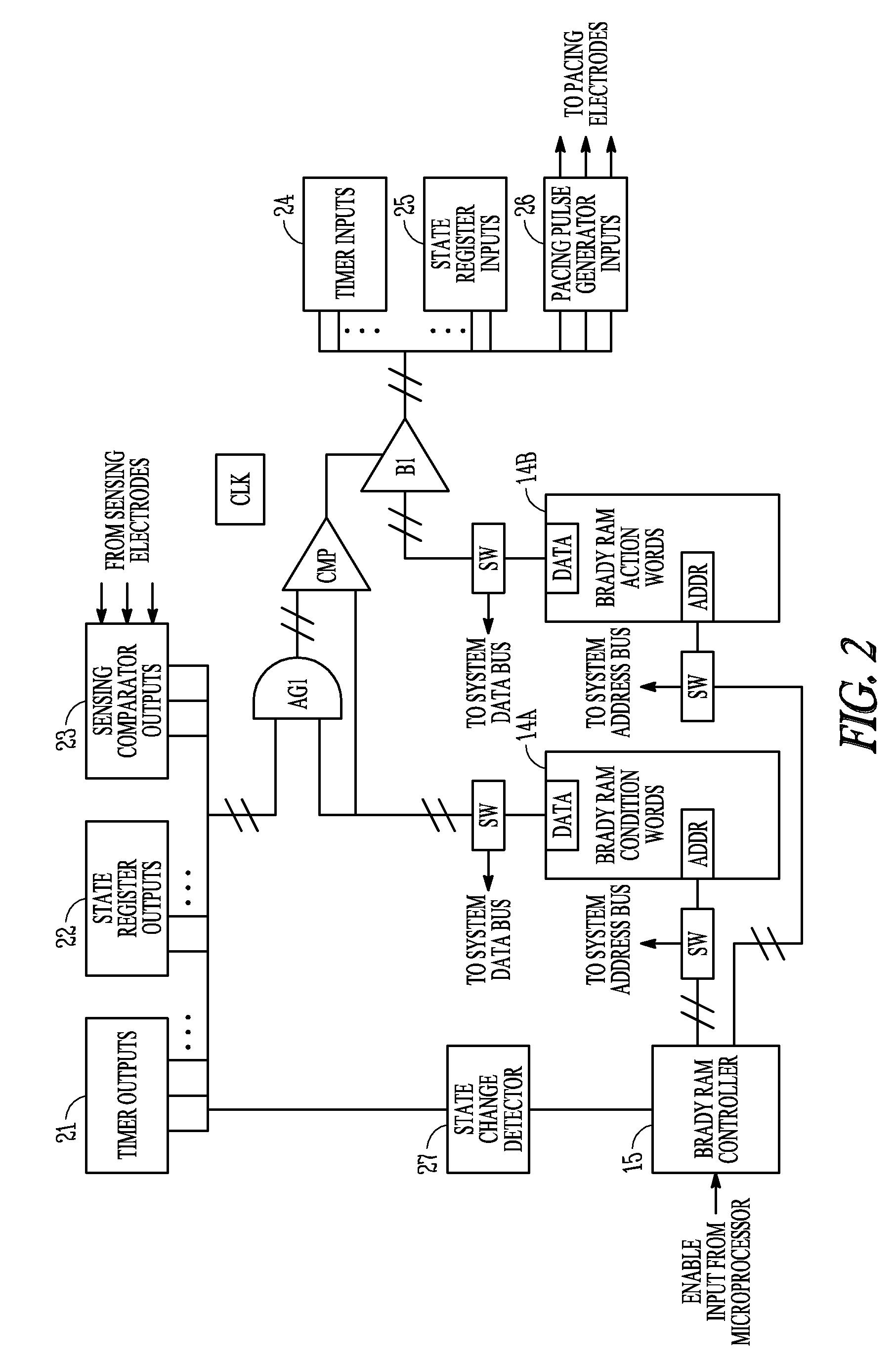Flexible neural stimulation engine
a neural stimulation engine and flexible technology, applied in the field of cardiac pacemakers, neural stimulators, implantable cardioverters/defibrillators, can solve the problems of large amount of battery power consumed, systolic and diastolic dysfunction, and software pacing decisions inevitably introduce variability in the timing of paces, so as to achieve the effect of easy modification of device behavior
- Summary
- Abstract
- Description
- Claims
- Application Information
AI Technical Summary
Benefits of technology
Problems solved by technology
Method used
Image
Examples
Embodiment Construction
[0022]Described herein is a device and method, such as for implementing a bradycardia pacing mode which allows for a low power implementation that is mostly hardware-based but still allows the flexibility for making major changes in brady behavior normally found only in firmware-based implementations. The brady behavior of the device is encapsulated by a RAM-based table in an area of RAM referred to as brady RAM, and the brady behavior can be changed by re-loading the brady RAM with a different table. Firmware executed by a microprocessor may load the table based on the brady mode desired. Hardware then reads the table only when pacing decisions need to be made, and uses the information in the table to make brady decisions. The design may be easily extended to more complicated pacing modes by making the RAM larger. Because hardware rather than firmware decides when to pace, there is no latency in pace delivery, and no jitter in the cycle length. The device may also utilize a FIFO qu...
PUM
 Login to View More
Login to View More Abstract
Description
Claims
Application Information
 Login to View More
Login to View More - R&D
- Intellectual Property
- Life Sciences
- Materials
- Tech Scout
- Unparalleled Data Quality
- Higher Quality Content
- 60% Fewer Hallucinations
Browse by: Latest US Patents, China's latest patents, Technical Efficacy Thesaurus, Application Domain, Technology Topic, Popular Technical Reports.
© 2025 PatSnap. All rights reserved.Legal|Privacy policy|Modern Slavery Act Transparency Statement|Sitemap|About US| Contact US: help@patsnap.com



